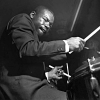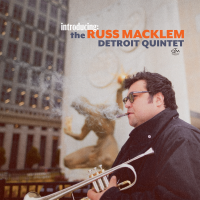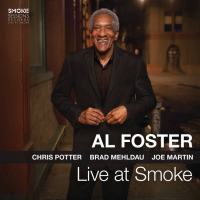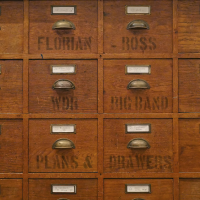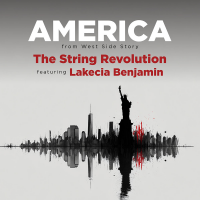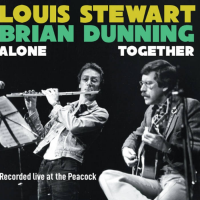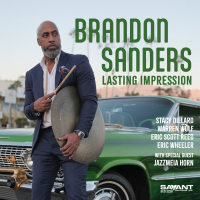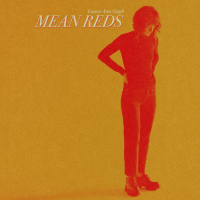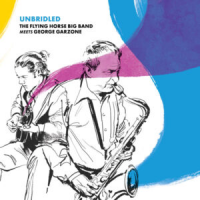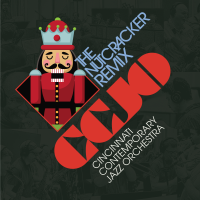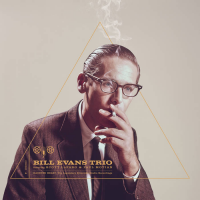Home » Jazz Articles » Multiple Reviews » A Muse Renaissance: Reissues from Roy Brooks, Kenny Barr...
A Muse Renaissance: Reissues from Roy Brooks, Kenny Barron, and Carlos Garnett
Over the years, Fields built a distinguished catalog, ultimately selling his holdings to 32 Jazz in 1996. The label later changed hands again when Savoy Jazz acquired it in 2003. Undeterred, Fields re-entered the fray a few years later, establishing HighNote Records and Savant Records, both of which he helmed until his passing in 2017. While reissues from the Muse catalog have been relatively scarce in recent years, jazz archivist and producer Zev Feldman has taken up the cause with his new venture, Time Traveler Recordings. His inaugural releases draw from the Muse archives, presented on vinyl mastered by Matt Luthans at The Mastering Lab and pressed by Optimal in Germany. Each edition, housed in a glossy Stoughton tip-on jacket, stands as a fitting tribute to the legacy of these too-often overlooked recordings.
 Roy Brooks
Roy Brooks The Free Slave
Muse Records
1972/2025
A vital drummer emerging from Detroit's rich jazz legacy, Roy Brooks remains an underrecognized figure, his career curtailed by later struggles with mental health. After recording Roy Brooks Beat (Workshop Jazz, 1964) for Motown's short-lived jazz subsidiary, Brooks relocated to New York, where he quickly became an in-demand sideman, working with such luminaries as Horace Silver, Yusef Lateef, Chet Baker, and Stanley Turrentine. Recorded live in 1970 at the Left Bank Jazz Society in Baltimore, The Free Slave captures Brooks leading a powerful quintet but would not see release until 1972, becoming the third entry in the Muse Records catalog. The lineup is formidable: a 26-year-old Woody Shaw and George Coleman on the front line, with fellow Detroiter Hugh Lawson on piano and Cecil McBee anchoring the group on bass.
The title track kicks things off with a funky, hard-driving groove built on a repeated bass ostinato—the kind of soulful boogaloo that was the lifeblood of Blue Note and Prestige sessions of the era. Shaw's fiery trumpet leads the charge while Lawson locks into the pocket, creating a deep, satisfying swing. The second of three Brooks originals, "Understanding," rides on McBee's dark, resonant bass lines and a lyrical theme embellished with delicate trills. Shaw again shines, using tonal color and texture to striking effect. "Will Pan's Walk" raises the temperature with Brooks delivering thrilling bursts of percussive energy, while the 5/4 samba "Five for Max" finds him showcasing his inventive "breath-a-tone" technique. If one album encapsulates the drummer's boundless creativity and muse—no pun intended—The Free Slave is surely it.
 Kenny Barron
Kenny Barron Sunset to Dawn
Muse Records
1973/2025
The shimmering quiver of a Fender Rhodes introduces Kenny Barron's Sunset to Dawn, his first album as a leader, recorded in 1973. Though Barron has often admitted he was never fond of the electric piano, he makes it sing throughout this engaging session. Essentially a trio date with Bob Cranshaw on bass and Freddie Waits on drums—augmented by two percussionists—the album's six Barron originals span a wide emotional and stylistic spectrum. The tender "A Flower" finds Barron at the acoustic piano, offering a masterclass in how technical precision and emotional depth can coexist seamlessly. By contrast, "Swamp Demon" delves into earthier territory, with agogô bells and cuíca enriching the texture over a hypnotic bass ostinato and Barron's elongated phrases. Blending the atmospheric openness of early Weather Report with the rhythmic vitality of Airto Moreira, it is an irresistible groove.
The second side opens with Freddie Waits' "Al-Kifha," an exuberant romp where vibes and piano share a bright unison theme before Barron launches into a surging solo. The tune's modal intensity recalls McCoy Tyner's Time for Tyner (Blue Note Records, 1969) an apt comparison, though Barron would employ Tyner's influence sparingly in the years that followed. One of Barron's most lyrical pieces, "Delores Street, S.F.," follows, with buoyant bongo accents adding subtle propulsion to an already radiant performance. Barron clearly valued this composition, revisiting it later on The Only One (Reservoir Records, 1990). The album closes in impressionistic fashion with "Dawn," a meditative piece that drifts on the soft glow of vibraphone and Richard Landrum's grounded conga pattern, a fittingly tranquil end to a striking debut.
 Carlos Garnett
Carlos Garnett Cosmos Nucleus
Muse Records
1976/2025
Jumping ahead to 1976, Carlos Garnett's Cosmos Nucleus stands as a bold and ambitious statemen, one that was largely overlooked upon release. To put its context in perspective, the year's top singles included "Play That Funky Music" by Wild Cherry and "Don't Go Breaking My Heart" by Elton John and Kiki Dee. Amid such pop dominance, Garnett's expansive vision was bound to fly under the radar.
A large-scale opus in the spirit of Sun Ra, Cosmos Nucleus features a twenty-six-piece ensemble brimming with horns, brass, and percussion. The opening track, "Saxy," is steeped in the rhythmic textures of its time—crunchy rhythm guitar and all—but once Garnett's tenor enters, he fuses groove and exploration in a manner reminiscent of Pharoah Sanders. The title track unfolds as a suite of shifting moods, highlighted by a remarkably young Kenny Kirkland making his recording debut some four years before joining the Miroslav Vitous Group.
Vocals enter the mix on "Wise Old Man" and "Mystery of the Ages," both funky yet elevated by the surging horn arrangements and Garnett's commanding tenor. "Kafira" ventures into spiritual territory, a meditative piece that could easily have suited Leon Thomas's incantatory style. "Bed-Stuy Blues" closes the album on a powerful note. Though predating Kamasi Washington by decades, it shares a similar sense of cosmic reach and social grounding. As a summation of Garnett's artistic vision, it ties together the album's threads in a finale both muscular and transcendent.
Tracks and Personnel
The Free SlaveTracks: The Free Slave; Understanding; Will Pan's Walk; Five for Max.
Personnel: Roy Brooks: drums; Woody Shaw: trumpet; George Coleman: tenor sax; Hugh Lawson: bass; Cecil McBee: bass.
From Sunset to Dawn
Tracks: Sunset; A Flower; Swamp Demon; Al-Kifha; Delores Street S.F.; Dawn.
Personnel: Player Name: instrument; Player Name: instrument.
Cosmos Nucleus
Tracks: Saxy; Cosmos Nucleus; Wise Old Men; Mystery of Ages; Kafira; Bed-Stuy Blues.
Personnel: Carlos Garnett: tenor and soprano sax; Kenny Kirkland: electric piano; Cecil McBee: bass; Byron Benbow: drums; Neil Clarke: congas; Gene Ballard: bongos; Otis McCleary: guitar; Cheryl Alexander: vocals; 18-piece horn section.
Tags
PREVIOUS / NEXT
Support All About Jazz
 All About Jazz has been a pillar of jazz since 1995, championing it as an art form and, more importantly, supporting the musicians who make it. Our enduring commitment has made "AAJ" one of the most culturally important websites of its kind, read by hundreds of thousands of fans, musicians and industry figures every month.
All About Jazz has been a pillar of jazz since 1995, championing it as an art form and, more importantly, supporting the musicians who make it. Our enduring commitment has made "AAJ" one of the most culturally important websites of its kind, read by hundreds of thousands of fans, musicians and industry figures every month.


